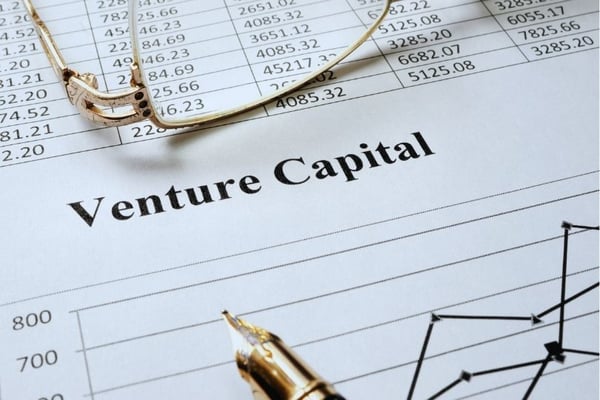Learn about different types of investment structures available for startups.
As an early stage company, sometimes it can be difficult to manage and understand the various investment structures available to you. It is essential to determine which is best for your specific needs now and in the future. This article aims to inform startups on the main types of investment structures available to you, and what differentiates each of them.
🔬 Learn more about: Funding Options for Biotech Startups
The two main types of funding the above investors will make are convertible debt/SAFEs or equity. Convertible debt is aptly named, as it is debt that will be eventually converted into equity (usually preferred stock) in the future. The future date is determined on a case by case basis, but it is most often the next equity financing for the company. This method of investment is efficient because it eliminates the need to do an in-depth valuation of the company before it has many assets.
Watch this 2-minute video to learn about difference investment structures from Snell & Wilmer Partner, Bardia Moayedi.
Equity is split into two categories: common stock, and preferred stock. Common stock is rarely given out on financing rounds, and it is most often what the founders hold in the company. Preferred stock is the type of equity most often given to investors. Preferred stock carries special rights in the charter and financing documents. Read below to learn more about the different investment types.
A convertible note is typically a short term loan to a company. Investors will buy a note for principal amount, and the note then has interest until its maturity date. The maturity date for convertible notes are typically 12-24 months after purchase. Once the loan matures, the company will either pay back the investor or the note will convert into equity. The interest rate typically ranges from 6-8%, but can move up or down depending on economic conditions. If the company is bought out before the note expires, the notes will pay a premium of 1.5 to 2 times their value after acquisition.

Convertible notes are attractive because they will convert to equity at a future round, called qualified financing. The stock sold from the loan conversion is at a discount, from around 10-20% depending on the market norm. The discount refers to a lower price per share as compared to the price paid for by other investors in the qualified financing round. Essentially, the investors will receive more shares of stock for the same principal amount. The discount is set through negotiation, and can also change throughout the life of the loan. For example, an investor might want a higher discount rate if it takes the company longer to reach the qualified financing round. The note will be documented with a term sheet called a Convertible Note Purchase Agreement, typically 2-3 pages. Some negotiations can result in other legal documents like a Security Agreement or a Subordination Agreement.
Some investors could ask for both a percentage discount and a valuation cap. Then, when qualified financing comes around, they will take the better of the two deals. Using a valuation cap means that the note will convert at a share price determined by dividing the valuation cap by the company’s fully diluted shares just before Series A funding. In order to get the best deal, companies should set a high valuation cap near the Series A valuation, so that the future convertible note will not be over-valued.
🔬 Related: Convertible Debt Financing for Your Startup
Simple Agreement for Future Equity (SAFEs) were introduced by the incubator Y Combinator in San Francisco. They are similar to convertible notes except that they are not debt. This means that they do not have interest or a maturity date. Instead the loan is a contractual obligation in which the investor gives a principal amount in exchange for stock at the next round of financing.
SAFEs do carry a bit of negativity however, particularly outside of the Y Combinator or Silicon Valley ecosystem. Investors may see SAFEs as “too easy” on the company, as they do not have to pay any interest, and the lack of maturity date could lower motivation to make it to the next funding round. However, the Y Combinator has refreshed their SAFE template in early 2019 to make them more investor friendly, called the post-money-SAFE.
Preferred stock is a hybrid security. This means that preferred stock is equity with rights, preferences, and privileges superior to common stock. It can be converted to common stock with a 1:1 ratio, and can also come with other special rights like board seats or voting protective provisions. One example of a preferred stock voting provision could be the founders needing the preferred stockholders to vote before they can raise their own salaries.
One of the main reasons that investors like receiving preferred stock is because it comes with downside protection, specifically through Liquidation Preference and Anti Dilution Protection. Liquidation Preference means that the preferred stockholders are paid before the common stockholders, specifically in instances of dividends or bankruptcy. Liquidation Preference can be either participating or non-participating, and is typically expressed as a multiple of the investment (1x, 2x, etc.). Participating liquidation preference means that preferred stockholders are paid first (as they are normally) in addition to participating in the common stock payouts afterward. Non-participating preferred stock allows the investor to choose between getting their principal payment back first or being treated as a common stock holder (not both as in participating preferred stock).
🔬 Learn: Trends in Healthcare Investments and Exits 2019

The key element of preferred stock financing is the company’s valuation. Valuation is considered an art, not a science and is therefore subjective to the person carrying out the math. The valuation will determine the value of the company’s stock, and how many shares the investors will receive in exchange for their monetary investment.
Here is a quick overview of a timeline for a preferred stock funding series:
These processes are not necessarily happening in sequence, but rather overlapping upon each other to minimize the time it takes to finalize the investment. Take note that the more detailed the investment term sheet is, the fewer issues there will be when it comes to finalizing documentation. The best way to make sure you are being represented well is to find a trusted advisor and/or legal counsel. They will help you negotiate and ensure you are getting terms that work for you and your company.
🔬 Learn: Where to Find Life Science Investors
Securing funding for your startup is not an easy task. It requires patience and motivation, but there are significant resources in the US and around the world to help get startups on their feet. You need to understand what type of investments are best for you, whether it be debt or equity, or a combination of both. As with most things regarding significant business changes, talk with a lawyer or consultant to ensure that you are being treated fairly.
Q: Do investors have a preference in investing in LLCs versus C-corporations?
A: Generally, investors will prefer investing in c-corporations (c-corps). One reason investors do this is because investing in an LLC creates tax barriers for venture capital groups, so they would much rather invest in a c-corp.
Q: Is there a time limit for how long it may take a company to get to the qualified financing round after issuing a convertible note?
A: Yes, most convertible notes have an ‘expiration date’ called a maturity date. The company must start the qualified financing round before the maturity date. If not, the company may need to ask for an extension or the investor could convert to common/preferred stock right away (at a favorable rate for the investor). The exception to this rule are SAFEs, as they do not have maturity dates.
Q: What does “No Cap” mean?
A: Having “No Cap” on your convertible note or SAFE means that there is an unlimited ceiling as to how much you can grow your company. This can help the startup when it comes time to discount the stock given to investors. No cap is generally a good thing, as it allows the company to be accurately valued at the time of financing.
Q: When is the best time to engage with a lawyer while attempting to raise capital for a startup?
A: The sooner you have a lawyer involved, the better you will be. But cost is a large consideration when getting a lawyer. Luckily, there are many resources available to startups that can provide free consulting or legal advice. A great place to start is your local SBDC branch! You can also look at your local law offices and see if they host free office hours or other similar services for the community.
This content comes from a webinar, Negotiating and Understanding Your Initial Angel and Venture Funding Round, featuring Bardia Moayedi, a Partner at Snell & Wilmer.
Bardia has significant experience representing companies and financial firms in a broad range of general corporate governance and transactional matters, including venture capital financings, mergers and acquisitions, debt offerings, spin-offs/divestitures, joint ventures, IPOs, follow-on offerings, and tender offers. He is a trusted advisor, often serving as the go-to outside counsel or lead counsel to his clients.
Be sure to subscribe to the ULP YouTube Channel to never miss another webinar, and connect with us on LinkedIn to stay in the loop!
Download The Ultimate Guide to Wet Lab Incubators in Southern California, a handbook to assist life science start-ups through the entire decision-making process to find wet lab space.
Download Now